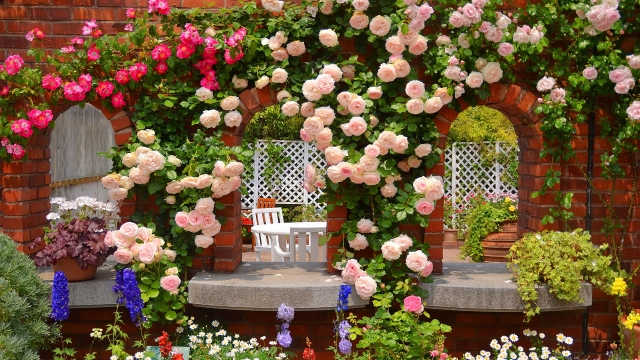
Gardening is a rewarding and therapeutic hobby that invites everyone to connect with nature. Whether you are a seasoned professional or just starting on your green journey, there are always new techniques and insights to discover. The beauty of gardening lies in the diversity of plants and the endless possibilities for creativity. Each garden can reflect your personality and style, while also bringing a sense of calm and fulfillment as you nurture your plants.
If you’ve ever gazed out at your patch of earth and dreamt of vibrant flowers, luscious vegetables, or a serene space to unwind, you are not alone. Many people find joy in cultivating their little slice of paradise, and with the right tips and tricks, you can achieve just that. This article will provide essential gardening tips that cater to everyone, helping you to flourish in your gardening endeavors. Whether you want to enhance an existing garden or start fresh, these suggestions will guide you to bloom where you’re planted.
Choosing the Right Plants
Selecting the right plants is crucial for a successful garden. Consider your climate zone, as particular plants thrive in specific temperature ranges and conditions. Research local weather patterns and seasonal changes to choose species that will flourish in your environment. Additionally, think about sun exposure; some plants need full sunlight while others prefer shade. Understanding your location’s unique climate will significantly impact your gardening results.
Another important factor is the soil type in your garden. Different plants have varying soil requirements, such as pH level and drainage capabilities. Conduct a soil test to determine its composition and amend it as needed. Incorporating organic matter can improve soil fertility and structure, providing a better environment for your plants. Knowledge of soil conditions will help you select plants that will establish and grow successfully.
Lastly, consider the spacing and layout of your garden. Some plants require more room to spread and grow, while others can thrive in tighter spaces. Plan your garden design according to the mature size of the plants. This not only helps in ensuring healthy growth but also enhances the overall aesthetic of your garden. Choosing the right plants that fit well into your garden’s design and space will lead to a more vibrant and functional landscape.
Soil Preparation Techniques
Proper soil preparation is crucial for the health and success of any garden. Begin by testing your soil to understand its pH and nutrient levels. This can be done using a simple DIY test kit available at garden centers. Knowing your soil’s characteristics will help you identify what amendments are necessary for optimal plant growth. Ideally, most plants prefer a slightly acidic to neutral pH, so aim for a range between 6.0 and 7.0.
Once you have your soil tested, it’s time to amend it based on the results. This may involve adding organic matter such as compost, well-rotted manure, or peat moss. These materials not only improve soil structure but also enhance its fertility by providing essential nutrients. Additionally, incorporating mulch can help with moisture retention and weed suppression, creating a more conducive environment for your plants.
After amending the soil, it’s important to till or mix it thoroughly to ensure that the amendments are evenly distributed. This can be done using a garden fork or a rotary tiller for larger areas. Take care to break up any clumps and remove stones or debris that may hinder root growth. By ensuring good soil texture and aeration, you create the ideal foundation for your plants to thrive in your garden.
Watering Wisely
Watering is one of the most critical aspects of gardening, and doing it wisely can make all the difference in the health of your plants. Knowing when to water is just as important as knowing how much to water. It’s generally best to water early in the morning or late in the afternoon. During these times, evaporation rates are lower, allowing the water to penetrate the soil more effectively. This practice not only conserves water but also ensures that your plants receive the hydration they need.
When it comes to how much water to give your plants, it’s essential to soak the soil deeply rather than giving shallow, frequent waterings. Deep watering encourages deeper root growth, which helps plants become more resilient to drought. A general rule is to aim for about one inch of water per week, either from rainfall or irrigation. Use a rain gauge to monitor how much water your garden is receiving to avoid overwatering or underwatering.
Pay attention to the type of plants you are caring for, as different plants have different watering needs. For instance, succulent plants require far less water than vegetables or flowering annuals. Additionally, consider the soil type; sandy soils drain quickly and may need more frequent watering, while clay soils retain moisture and require less. Adjusting your watering schedule based on the specific needs of your garden will lead to healthier, thriving plants.
Pest Control Strategies
Managing pests in your garden is essential to ensure healthy plants and a bountiful harvest. One effective strategy is to encourage beneficial insects that prey on garden pests. Ladybugs, lacewings, and predatory wasps can help keep aphid and caterpillar populations in check. You can attract these allies by planting native flowers like marigolds and dill, which provide nectar and habitat. Avoid using broad-spectrum insecticides, as they can harm these helpful insects along with the pests.
Another approach is to implement physical barriers to keep pests away from your plants. Floating row covers can protect young seedlings from insects, while mesh netting can shield ripening fruit from birds. Additionally, handpicking larger pests like snails and caterpillars can be effective, particularly in small gardens. Check your plants regularly, as early intervention can prevent a small problem from becoming a significant infestation.
Finally, adopting an integrated pest management plan can help you deal with pests more sustainably. This includes monitoring for signs of pests, identifying them accurately, and choosing control methods that suit your garden. Organic solutions such as neem oil or insecticidal soap can be effective against many pests while being safer for the environment. By rotating crops and practicing good sanitation, such as removing debris and dead plants, you can reduce the likelihood of pest problems in your garden.
Seasonal Maintenance Tips
As the seasons change, so do the needs of your garden. In spring, it’s vital to prepare the soil by tilling and adding organic matter such as compost. This will encourage healthy root development and provide nutrients for your plants as they begin to grow. Additionally, it’s a great time to prune any dead or diseased branches from your trees and shrubs to promote healthy new growth.
During the summer months, focus on watering your plants adequately, especially during dry spells. Morning is the best time to water to minimize evaporation. Keep an eye out for pests and diseases; prompt action can save your plants from serious damage. Regularly deadhead blooming flowers to encourage additional growth and maintain a tidy appearance in your garden.
Enviroice on plants
In the fall, it’s essential to prepare your garden for winter. Clean up any fallen leaves and debris to prevent pests and diseases from overwintering. Consider planting cover crops to enrich your soil and prevent erosion during the colder months. Finally, mulch around perennials to protect their roots from frost and conserve moisture, ensuring a healthy start when spring arrives again.



